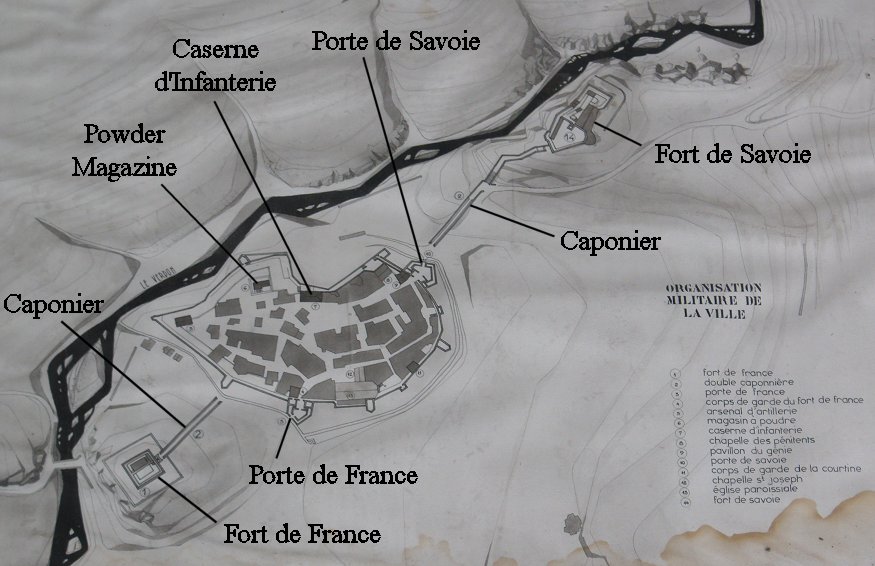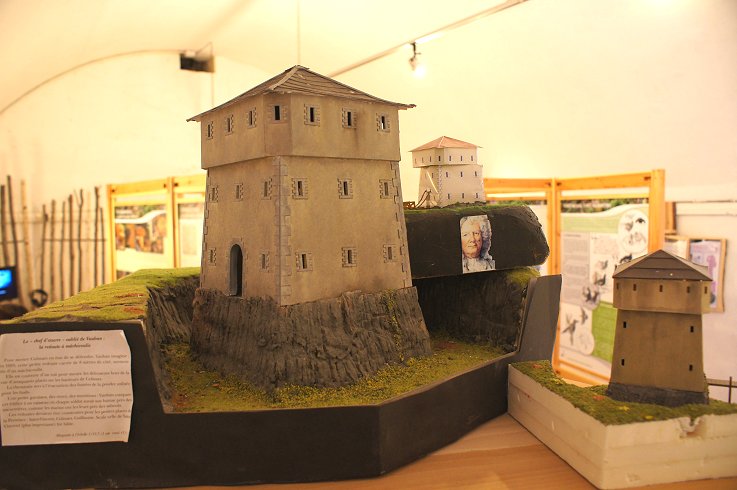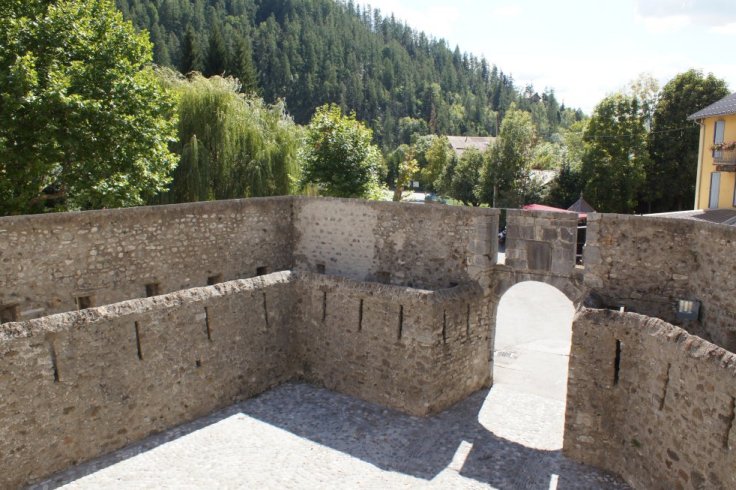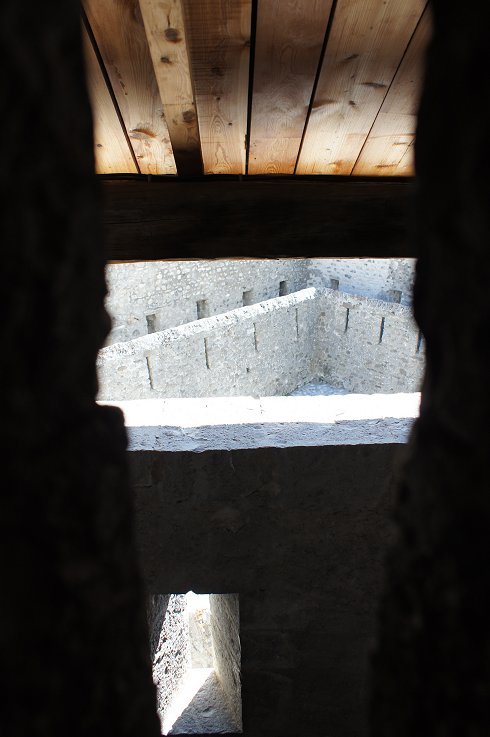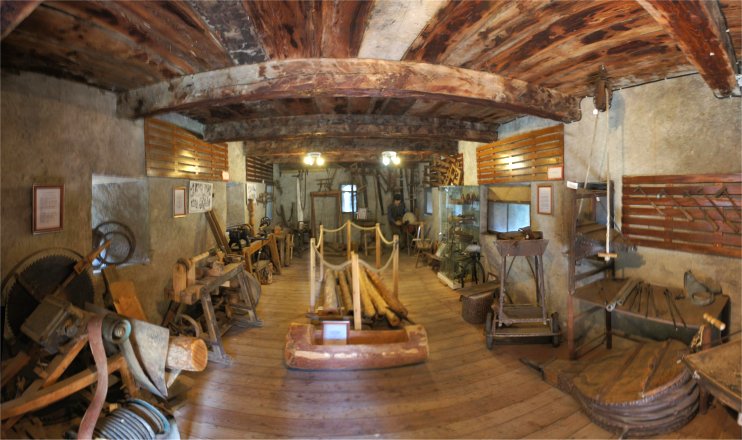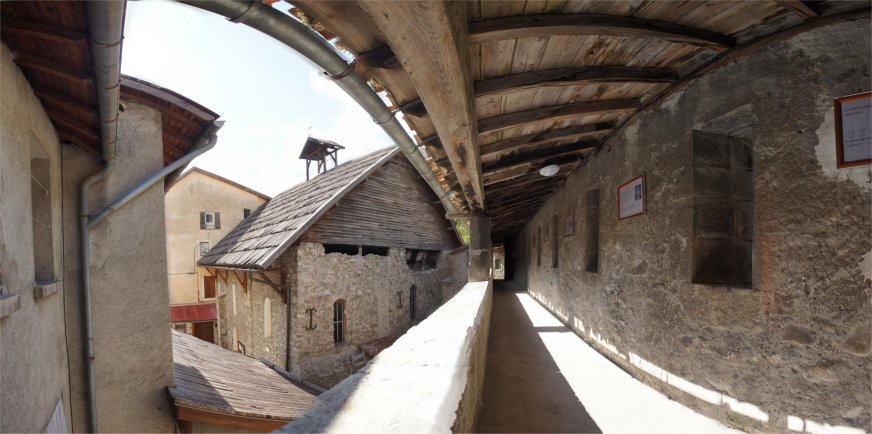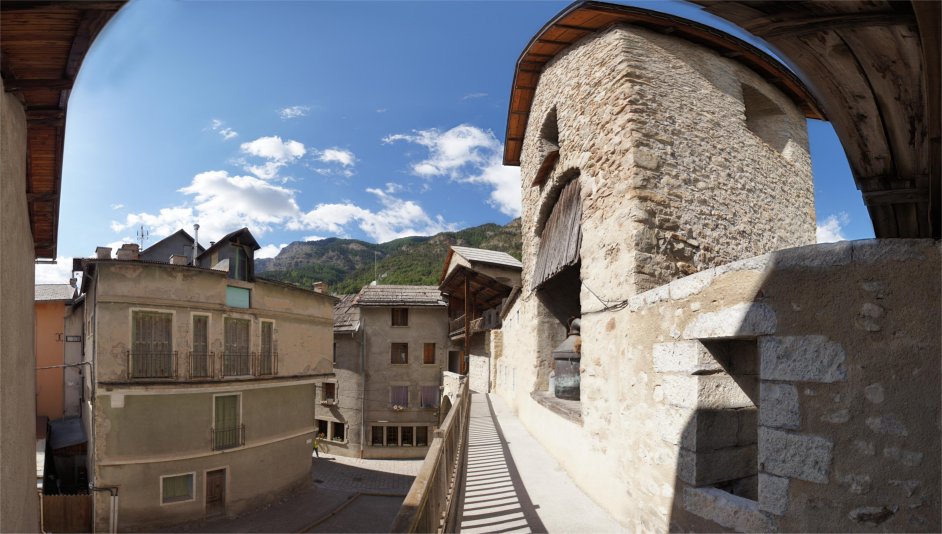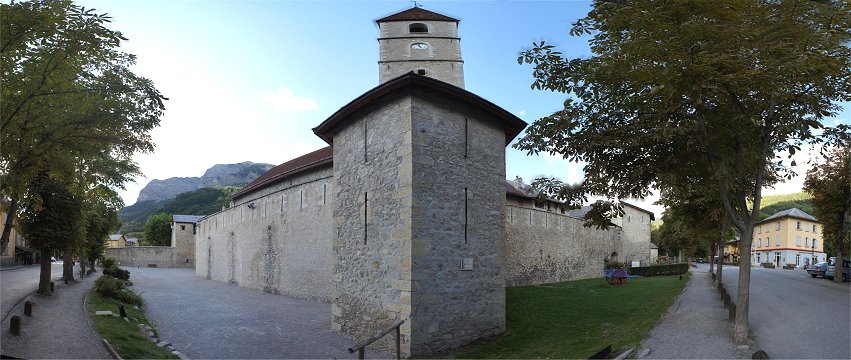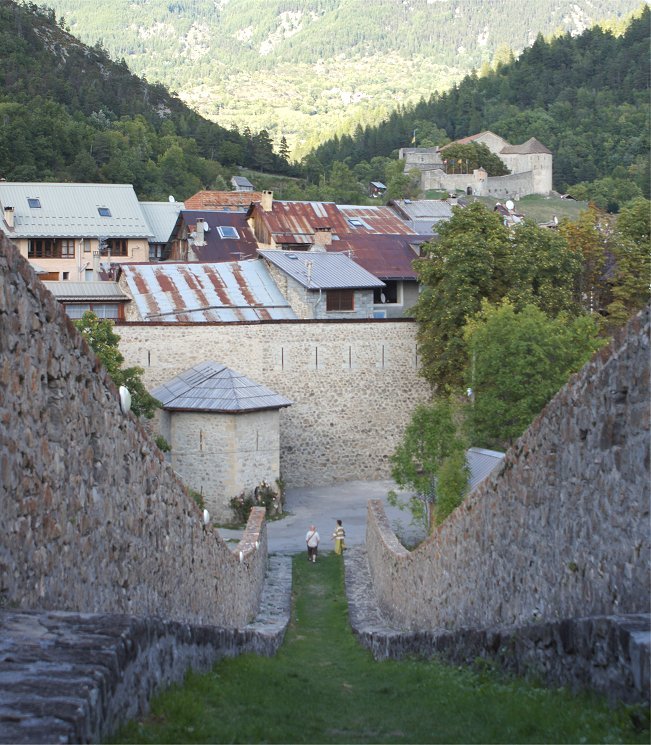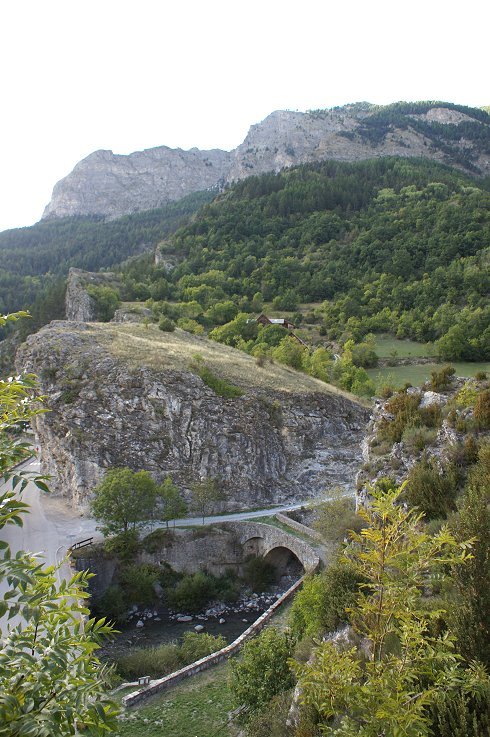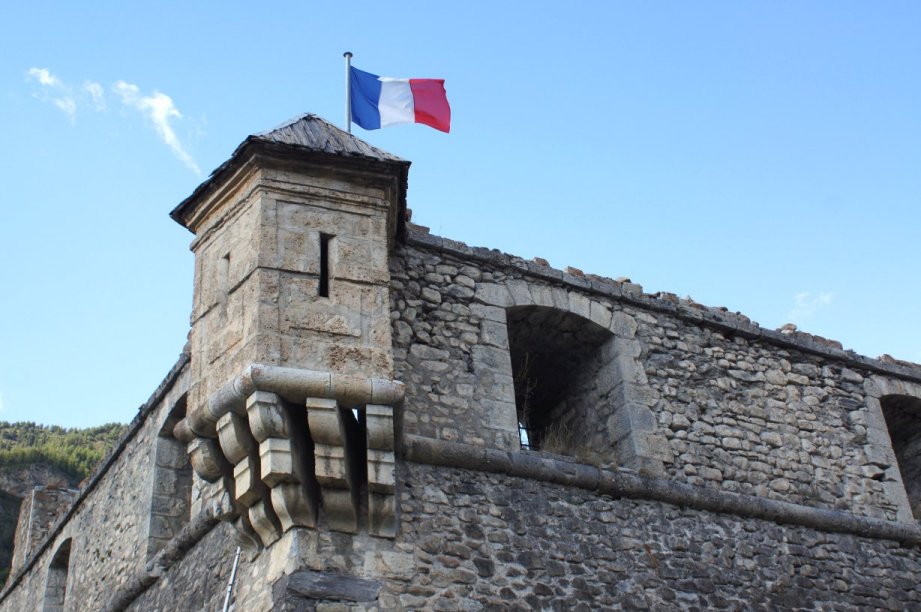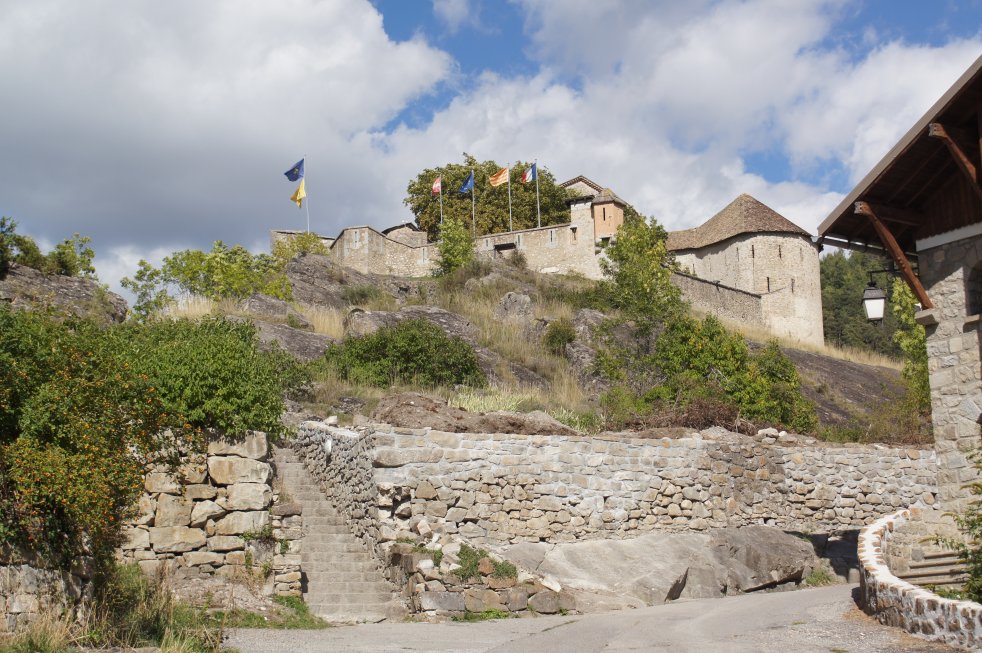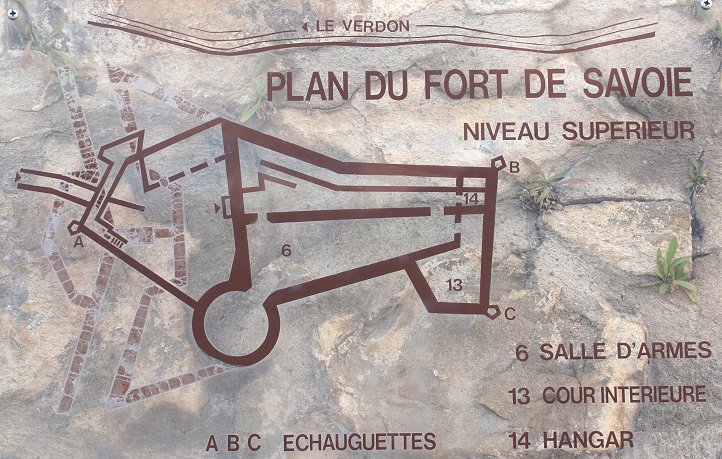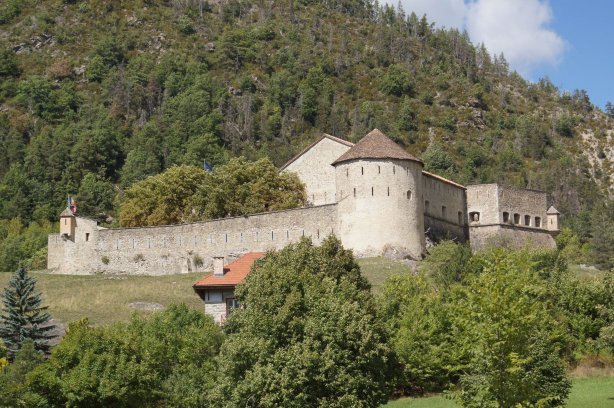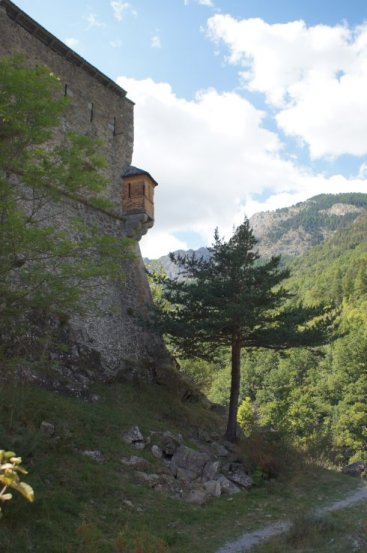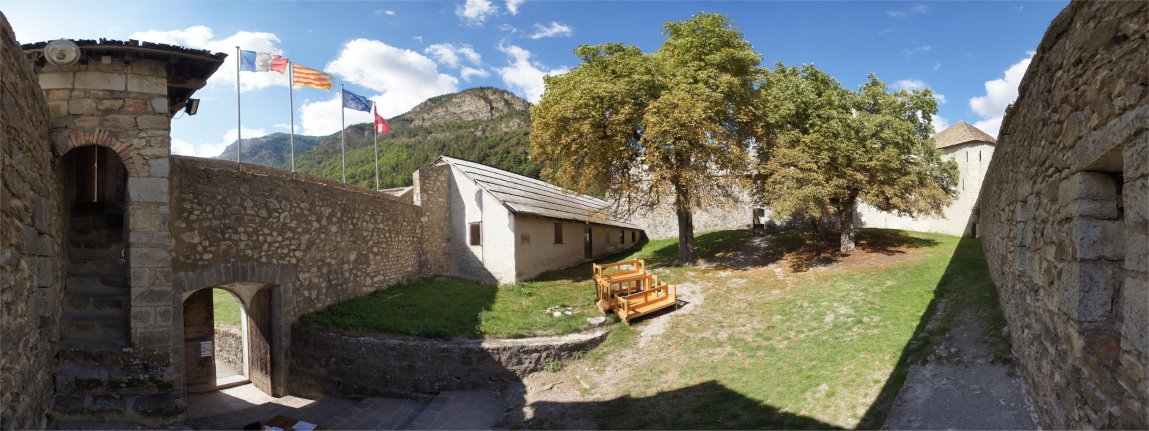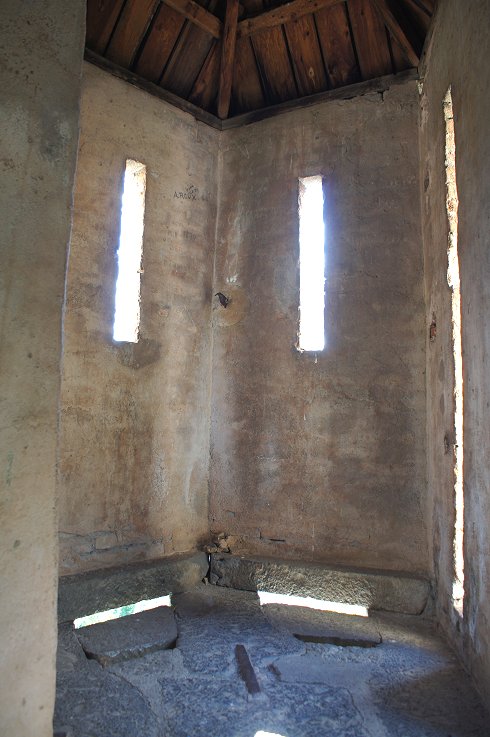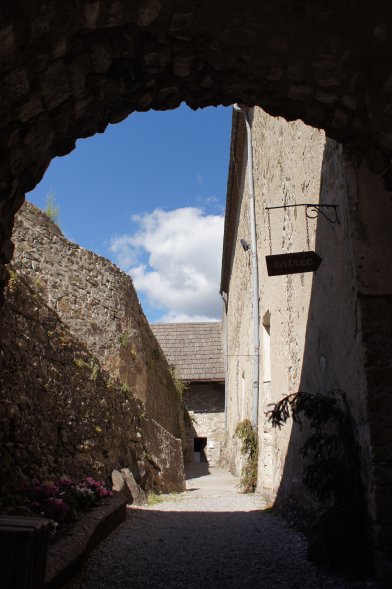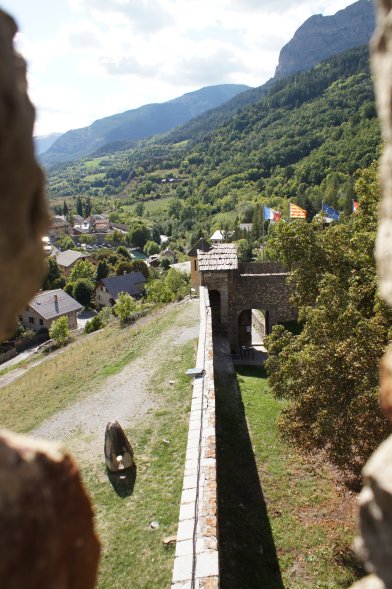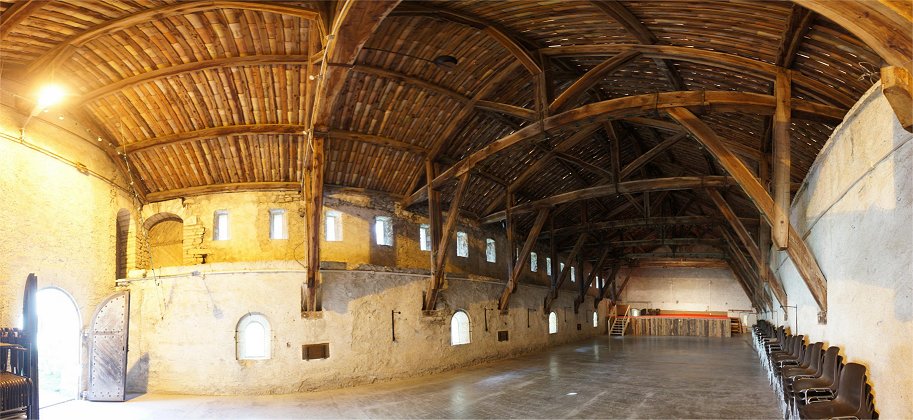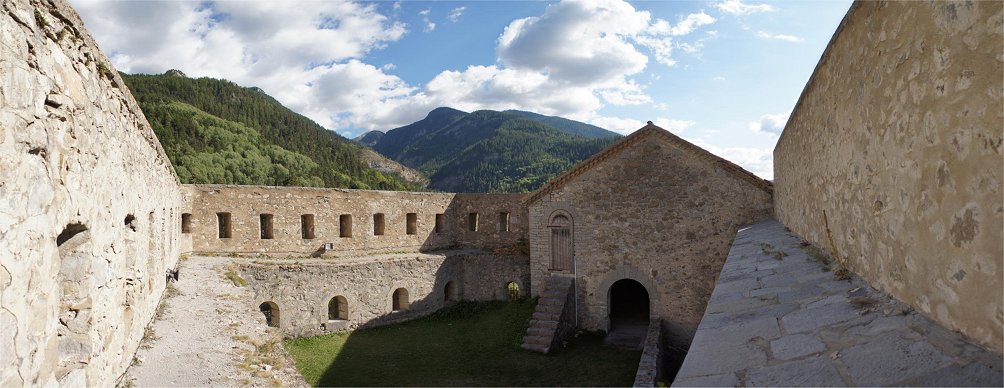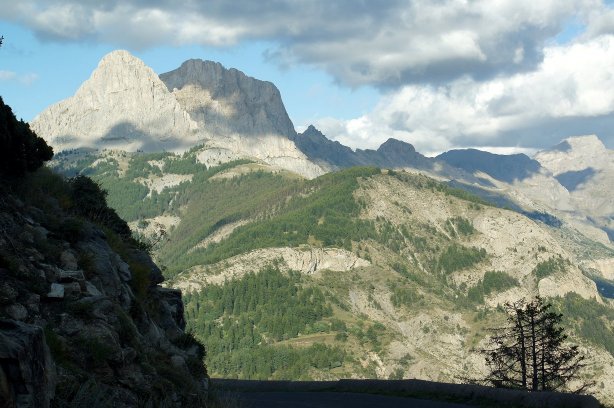

| The name "Colmars" is devived from the Latin "Collis Martis", a hill dedicated to Mars, the god of war. Colmars in the French Alps was fortified in medieval times, and defenses were strengthened in the 1500s. To the north, the Col d'Allos separated France from Savoy, sometimes an ally and sometimes an enemy. A crude track south over the col was the only route from Savoy to the French town of Colmars. The passage could be safely made only during the warmer season, and the journey was difficult enough that the French assumed that a Savoyard army could not bring heavy artillery. This greatly simplified the task of fortifying the town of Colmars. The Savoyards did cross in 1690 and besieged the town, but a small French force sent them back where they came from. |  |
